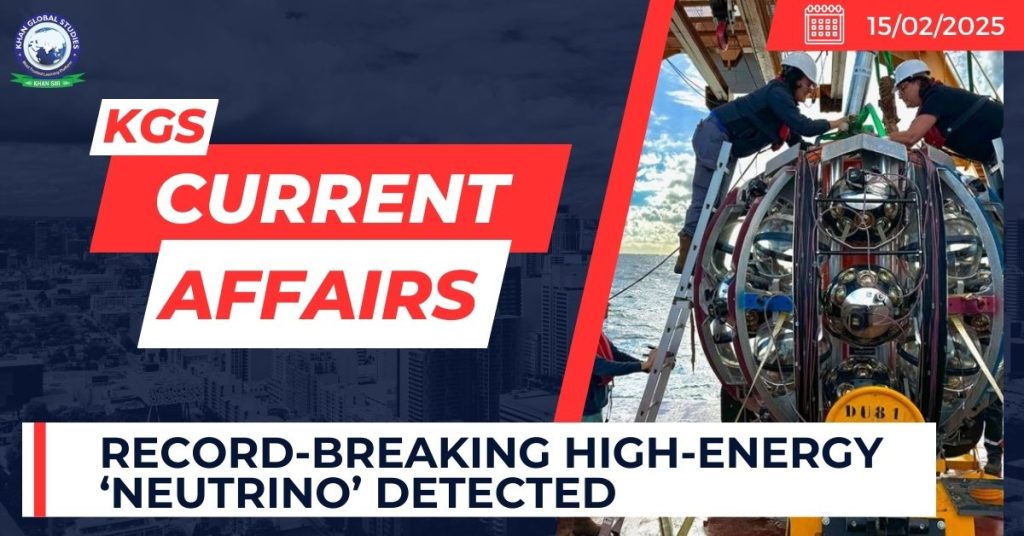Context:
Recently, Scientists have detected a high-energy neutrino using an observatory currently being built deep beneath the Mediterranean Sea near Sicily.
More on the News:
- The newly discovered neutrino’s energy is estimated to be around 30 times higher than any neutrino previously detected.
- The newly described “ultra-high-energy” neutrino was detected by ARCA in February 2023 and was measured at about 120 quadrillion electronvolts (units of energy).
- It is a quadrillion times more energetic than particles of light called photons and 10,000 times more energetic than particles made by the world’s most powerful particle accelerator, the Large Hadron Collider near Geneva.
- The Scientists from the KM3NeT Collaboration (Cubic Kilometre Neutrino Telescope) think the neutrino originated from outside the Milky Way galaxy.
KM3NeT Project
It comprises two large neutrino detectors at the bottom of the Mediterranean.
- ARCA (Astrophysics Research with Cosmics in the Abyss) – 3.4 km deep near Sicily, Italy – It is designed to find high-energy neutrinos.
- High-energy neutrinos arise from particle collisions occurring in violent events such as a black hole eating matter or bursts of gamma rays during the explosive deaths of stars.
- ORCA (Oscillation Research with Cosmics in the Abyss) – 2.4 km deep near Provence, France – It is designed to detect low-energy neutrinos.
The KM3NeT detectors are still under construction and have not yet reached their full capabilities.
Neutrinos (Ghost Particles)
Scientists named the three types of neutrinos they have discovered so far for the other matter particles they interact with:

- Electron neutrino
- Muon neutrino (detected this time).
- Tau neutrino.
Neutrinos change between types as they travel, something scientists called neutrino oscillation.
Neutrinos are the second most abundant particles in the cosmos after photon.
Neutrinos offer scientists a different way to study the cosmos, not based on electromagnetic radiation (light).

